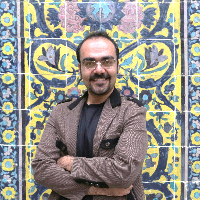Transit-Oriented Corridor Pattern in Pasdaran Boulevard, Sanandaj
Author(s):
Abstract:
The overlap between neo-traditional neighborhoods and the provision of transit services became an incentive for Peter Calthorpe to codify the concept of Transit-Oriented Development (TOD) in the late 1980’s. As a new approach, it has been developed in direction of sustainable urban development in recent decades. It aims to integrate land use and transportation planning system through the construction or extension of a rapid transit system along with the creation of compact, and walk-able neighborhoods (mixeduse communities) around transit stations will encourage people to live near transit station areas and use it to reduce the use of individual car and creates more safe, dynamic and friendly communities. This means that “TOD” developed as a new approach based on sustainable development principles. Since transit systems promote more efficient resource usage, cities are increasingly applying transit-based strategies to solve urban sprawl and urban planning dilemma. Considering this background and the existing challenges of Iranian cities including car-dependency, traffic congestion and hence the traffic-related pollution problems, and particularly the pattern of urban sprawl which is extending due to the wave of urban and rural migration, it is necessary to use such new approaches to reduce such challenges and create a driving force for sustainability of urban areas. In this regard, Sanandaj has been selected as case study of the research to pursue some aspects of TOD regarding its mixed-use corridor type for Pasdaran Boulevard. Sanandaj is situated in west of Iran and according to the 2011 Iranian census; the total population of Sanandaj is 375280. As the capital of Kurdistan province, it contains a wide range of industrial and institutional services. The same as other Iranian cities, Sanandaj also experienced the pattern of sprawl development mainly due to the topographic features of the city’s natural context, the wave of migration from rural areas and inadequate and unaffordable housing provision within the city. Residents of sprawl areas are commuting cross- suburbs to city and vice versa each day to reach urban services and homes. This daily movement which\ increases the number of trips by private cars is also worsening the Sanandaj’s urban challenges. Within this context, the study location is a 6.4 km corridor on Pasdaran Blvd which formed the main north-south corridor in Sanandaj. This corridor begins in downtown Sanandaj at Azadi sq., and runs across the Blvd through Deedgah Park to Jahad Sq. at the gateway to Kermanshah. This corridor serves as the primary gateway to Kermanshah and between the city and Baharan district and as an important principal corridor to move traffic north-south across the whole city of Sanandaj. Considering the above points, the study has been adopted a kind of Descriptive-Analytical method regarding the results of records and field survey conducted in spring 2012 to cover the following
Aims
1. Creating a comprehensive development approaches for the Pasdaran corridor that Takes advantage of its location and public transportation resources. 2. Creating an interconnected system of opportunities for transit station areas within the corridor 3. Intensifying development in proximity to the transit stations along Pasdaran corridor Regarding to the questions such as: the capabilities and limitations of land use, density of urban texture, characteristics of public transport such as traffic problems, accessibility and mobility, pedestrian and bicycle issues, bus services and parking facilities has been studied along the Pasdaran corridor. For more details, the Pasdaran corridor has been divided into two sections based on common physical, functional and traffic characteristics. For strategies and prioritizing them, a multi-criteria decision-making method including AHP has been used regarding to the certain aims including increasing sustainability and creation of people-friendly and dynamic environment, accessibility and providing sustainable transport options and reducing environmental challenges. The following strategies have got highest priority regarding each section to maximize TOD potential and benefits to the boulevard: Section one: Reducing car dependency, Pedestrianization along with development of public transport, Beautification of the public buildings sustainable architecture and paying more attention to the quality of public places Section two: increasing access to public transport, connectivity of main roads, improving pedestrian movement and access and more mixed-uses and transferring Incompatible functions Due to the proximity of first section to the city centre, its strategies are mainly in relation to the identity and sense of place preservation along with pedestrian-oriented development approach. On the contrary, the strategies of second section focus on the accessibility to public transport and car-dependency reduction. To achieve such strategies, it is necessary to create a legal framework for city’s spatial planning. Also, it is essential to integrate various sectors including private, public and government to pave the way for implementation of such strategies.Keywords:
Language:
Persian
Published:
Journal of Architect, Urban Design & Urban Planning, Volume:7 Issue: 13, 2015
Page:
361
magiran.com/p1406064
دانلود و مطالعه متن این مقاله با یکی از روشهای زیر امکان پذیر است:
اشتراک شخصی
با عضویت و پرداخت آنلاین حق اشتراک یکساله به مبلغ 1,390,000ريال میتوانید 70 عنوان مطلب دانلود کنید!
اشتراک سازمانی
به کتابخانه دانشگاه یا محل کار خود پیشنهاد کنید تا اشتراک سازمانی این پایگاه را برای دسترسی نامحدود همه کاربران به متن مطالب تهیه نمایند!
توجه!
- حق عضویت دریافتی صرف حمایت از نشریات عضو و نگهداری، تکمیل و توسعه مگیران میشود.
- پرداخت حق اشتراک و دانلود مقالات اجازه بازنشر آن در سایر رسانههای چاپی و دیجیتال را به کاربر نمیدهد.
In order to view content subscription is required
Personal subscription
Subscribe magiran.com for 70 € euros via PayPal and download 70 articles during a year.
Organization subscription
Please contact us to subscribe your university or library for unlimited access!



